Many people don’t realize that washing our cars in the driveway is not environmentally friendly….
The post Wash Your Car With Earth-Friendly Results appeared first on Earth911.

Many people don’t realize that washing our cars in the driveway is not environmentally friendly….
The post Wash Your Car With Earth-Friendly Results appeared first on Earth911.
Following a tense debate, the European Parliament has voted in favor of a Nature Restoration Law that establishes legally binding targets to restore degraded natural areas in the European Union (EU). It is the first major piece of legislation to protect biodiversity in the EU in 30 years.
Members of Parliament (MEPs) said the restoration measures must cover at least one-fifth of the land and sea areas in the EU and be in place by 2030, a press release from the European Parliament said.
“The Nature Restoration Law is an essential piece of the European Green Deal and follows the scientific consensus and recommendations to restore Europe’s ecosystems. Farmers and fishers will benefit from it and it ensures a habitable earth for future generations,” said MEP César Luena, a Spanish politician who was one of the biggest champions of the measure, in the press release.
The bill passed 336 to 300, with 13 abstentions, and will now pass to a committee of European representatives, reported The New York Times.
Restoring ecosystems is essential to battling biodiversity loss and climate change, as well as reducing risks posed to food security, MEPs emphasized. They added that the new law does not interfere with the creation of renewable energy infrastructure, and does not require new protected areas to be created in the EU.
With more than 80 percent of European habitats suffering, the continent was in desperate need of a binding law to restore the continent’s wild spaces.
“European nature is in a dire state, but this vote shows that there is still hope to restore and grow what’s left,” said Špela Bandelj, project manager for Greenpeace Central and Eastern Europe Biodiversity, in a press release from Greenpeace. “So far governments and the EU have failed to act. The nature restoration law is a clear benchmark to judge them on their actions on the ground.”
Parliament said the new law must support international commitments by the EU, especially the Kunming-Montréal Global Biodiversity framework, which was adopted at the 15th Conference of Parties to the UN Convention on Biological Diversity in 2022.
“It’s a huge social victory,” Luena said, as The New York Times reported. “It’s good for everybody. Because if you have healthy ecosystems, then the economic systems which depend on these ecosystems are going to be healthy themselves.”
Before the law can take hold, EU countries must quantify the restoration area needed to achieve restoration goals for each type of habitat, and the European Commission must provide data on the conditions needed for long-term food security.
The possibility of restoration law targets being postponed in the event of exceptional socioeconomic circumstances was held open by Parliament.
Within a year of the law coming into force, assessments of any gap between available EU funding and the financial needs of restoration would have to be assessed by the Commission, and funds to make up the difference would need to be found.
The Commission has said that, for each euro invested in the new legislation, benefits of at least eight euros would be reaped.
Parliament will now begin negotiations on the final draft of the Nature Restoration Law.
“Our position adopted today sends a clear message. Now we must continue the good work, defend our ground during the negotiations with member states and reach an agreement before the end of this Parliament’s mandate to pass the first regulation on nature restoration in the EU’s history,” Luena said in the press release.
The post EU Backs First Major Nature Restoration Law in 30 Years appeared first on EcoWatch.
The Environmental Protection Agency is proposing strict standards on lead paint that would prompt the removal of lead in millions of buildings, including homes, schools, and daycare centers. The move was set in motion by a lawsuit from environmental groups alleging that the EPA’s lead standards were too lax to protect public health.
Even after decades of efforts to reduce lead exposure from gasoline, pipes, and paint, half of children in the U.S. have detectable traces of lead in their blood, according to a study in 2021 that tested more than 1 million kids under the age of 6. Those who live in low-income neighborhoods and in older homes are at the highest risk.
“We know that no level of exposure to lead is good for our children. Zero,” said Janet McCabe, the EPA’s deputy administrator, at an announcement of the proposal in Newark, New Jersey, on Wednesday. The metal has been found to damage children’s brains, slow their growth, and cause developmental and behavioral problems, according to the Centers for Disease Control and Prevention.
While the United States banned lead paint nearly half a century ago, the rules didn’t require removing the toxic substance from existing buildings. An estimated 31 million houses built before the 1978 ban still have lead paint, and nearly 4 million of those homes are occupied by families with children younger than 6. The EPA’s new rule would virtually prohibit lead dust, reducing exposure for between 250,000 and 500,000 children under the age of 6.
Any sign of lead in a home or childcare center would classify it as a lead hazard. That would in turn trigger disclosures — say, to the families of kids attending the daycare or to prospective home buyers — and potentially require that the lead source be removed. The only exception is for contamination that existing cleanup methods can’t get rid of.
The plan was decades in the making. In 1992, after scientists found lead exposure was widespread among children, Congress passed a law requiring the EPA to establish the first hazard standard for lead in dust. But the agency was slow to create the standard, waiting until 2001 to do so, and it failed to tighten the rules when scientific evidence showed that lead was a health hazard even at the smallest levels of exposure.
Court battles ended up forcing the agency to revisit its lead standards — twice. The most recent lawsuit, filed 2019 by the Sierra Club, Earthjustice, and other public health and environmental groups, alleged that the EPA’s revised standards were still insufficient. In 2021, the U.S. 9th Circuit Court of Appeals ordered the EPA to set its standards based on health effects, as opposed to factors like feasibility and testing capabilities — a decision that prompted the EPA’s new proposed rule. Before an EPA regulation becomes final, it has to move through a public comment period.
Environmental groups applauded the EPA’s new, stricter proposal but admonished the agency for decades of delay. “Today’s proposal, which finally acknowledges that any exposure to lead at any level is a hazard, is a gigantic leap forward in this country’s long-delayed efforts to eliminate, or at least significantly reduce, lead exposures,” said Eve Gartner, the director of Earthjustice’s Crosscutting Toxics Strategies program, at the EPA’s announcement on Wednesday.
Removing lead from buildings won’t necessarily erase the threat entirely. For example, a recent investigation from the Wall Street Journal unearthed a hidden source of lead contamination in the environment: a countrywide network of lead-coated cables laid by telecom giants such as AT&T and Verizon that have gone unnoticed by regulators. It’s another sign that removing lead, with its once-ubiquitous use in the country’s construction, remains a daunting task.
This story was originally published by Grist with the headline The EPA’s plan to eliminate lead in buildings is a ‘gigantic leap forward’ for public health on Jul 12, 2023.
Native to England, Wales and Scotland, the Eurasian beaver was hunted to extinction in the 16th century, according to The Royal Society for the Protection of Birds. But they have been slowly returning to England and conservationists say they are now being reintroduced to the Nene Wetlands nature reserve in Northamptonshire, England, for the first time in 400 years.
Beavers’ gnawing behavior has a positive impact on their environment. By cutting back tree stems, homes for birds and insects are created from the regrowth.
“This is an exciting and unique opportunity to see this iconic species return to the Nene Valley, bringing back both its natural habitat restoration skills as well as providing an opportunity for the visitors to see beavers in the wild at our most visited reserve,” said Matt Johnson, Wildlife Trust in Northamptonshire conservation manager, in a press release from the Wildlife Trust for Beds, Cambs & Northants.
Conservationists are counting on the beavers being released in Nene to help manage its wet woodland habitat. They will help with the restoration of reedbeds in an enclosed area by Delta Pit. Their wetland work will be beneficial to a variety of species, as well as offer visitors the chance to observe them through the Rushden Lakes visitor center.
“We know that nature is critical for our wellbeing and for a secure future, and urgent action is needed to tackle the decline in nature and biodiversity,” said Mike Thomas, regional asset director of the Crown Estate, in the press release.
A feasibility study was successfully completed, and a license was procured by Natural England for the release of the beavers, which will be reintroduced to the wetlands next winter.
Beavers weren’t officially recognized as an English native species until October of 2022, when they also became a European protected species. Various Wildlife Trusts around England have been implementing beaver release programs, as they have been found to have a significant positive impact on wetlands as a keystone species.
Known as eco-engineers, beavers will be able to help with removing the growth of willows around lake edges at Delta Pit to the extent that not as much site management will be required. Their foraging will also diversify marginal vegetation. The restructuring by the beavers will not only benefit birds, but other species like bats and invertebrates.
Beavers only dine on plants, and love the non-native invasive species called Himalayan balsam that can interfere with the growth of native wildflowers, another added benefit to having them in the wetlands ecosystem.
The release of the beavers into the Nene Wetlands will be the first time beavers have been released onto Crown Estate land.
“These will be the first beavers to be reintroduced on our land and we are looking forward to welcoming them into our community,” Thomas said in the press release.
The post Beavers to Be Reintroduced to English Wetlands After 400 Years appeared first on EcoWatch.
The U.S. Department of Transportation’s Federal Highway Administration (FHWA) has designated $27.5 million toward replacing buses at Grand Canyon National Park. The Grand Canyon National Park Shuttle Bus Fleet Replacement will add 10 new electric buses along with 20 compressed natural gas (CNG) buses.
According to the National Park Service, about 6 million people visit the Grand Canyon each year. Visitors rely on the free shuttle bus system to get to the various sites around this popular national park.
The new buses aim to provide reliable bus options as well as charging infrastructure for the battery-electric buses.
“Grand Canyon National Park is one of our most beloved national parks,” U.S. Transportation Secretary Pete Buttigieg said in a statement. “This grant, made possible by President Biden’s Bipartisan Infrastructure Law, will help ensure safe and reliable bus service for park visitors for decades to come.”
Although some of the replacement buses will be electric, most will still be fueled with compressed natural gas. According to the U.S. Environmental Protection Agency (EPA), compressed natural gas may reduce tailpipe greenhouse gas emissions by around 20%. But CNG is primarily made up of methane, a greenhouse gas that is about 25 times more potent than carbon dioxide.
The U.S. Energy Information Administration noted that natural gas exploration can have negative environmental impacts, as exploring and drilling for natural gas will disrupt the plants and soil in an area. Producing natural gas also produces contaminated water that requires special handling or it could pollute environments.
Still, the new fleet will replace less efficient and outdated buses, and the project is one of seven to receive grants for transportation improvements. The seven grants total $130.5 million as part of the FHWA’s Nationally Significant Federal Lands and Tribal Transportation Projects Program.
“The necessary replacement of the outdated shuttle bus fleet is an opportunity to upgrade to cleaner, quieter electric buses,” Grand Canyon National Park Superintendent Ed Keable said. “This project will address transportation challenges related to maintaining an aging fleet, and the NPS goal to achieve sustainable transportation alternatives.”
Some other projects that received grants include the US93 Dublin Gulch Road to Gunlock Road project in Montana, which will see construction of a new bridge and wildlife collision reduction infrastructure, and Ecusta Rail Trail, a 18.8-mile shared-use path in North Carolina. The funding was made available through the Bipartisan Infrastructure Law, which passed in 2021.
The post Electric Buses Are Coming to Grand Canyon National Park appeared first on EcoWatch.
Researchers have announced findings that humid days with temperatures of 34℃ (93.2℉) can stress the…
The post Heat Risk Update: A Humid 93°F Puts People in the Danger Zone appeared first on Earth911.
If you want to move towards a plastic-free home, you can certainly make your own…
The post Plastic-Free Household Cleaning Products appeared first on Earth911.
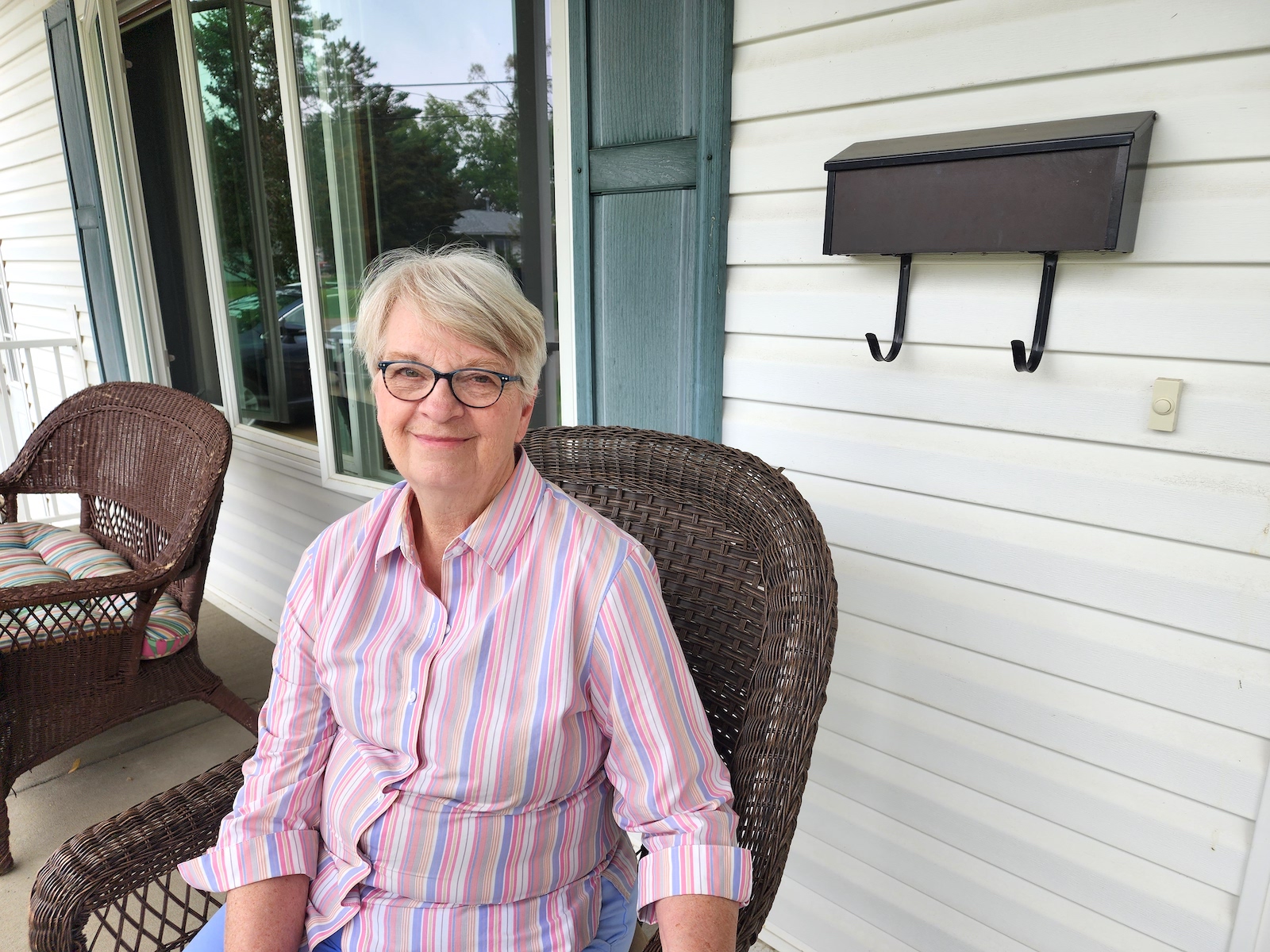
A low, bellowing train horn haunts the daily routine of Camanche, Iowa. It’s there in the morning when diners shuffle into Spring Garden Family Restaurant, the only place open for breakfast. They sit at a two-top counter while local news plays on a muted television and pounds of soon-to-be crispy hash browns kiss the griddle.
In the afternoon, Alice Srp sits in her dining room and looks at the Mississippi River. She is talking about the train derailment that happened earlier this year in East Palestine, Ohio, when the horn blares again, stopping the conversation.
“That situation in Ohio was so sad,” Srp said. “You feel for those people, but your heart is thinking, ‘Are we going to be [next]?’”

Alice Srp sits on the porch of her home in Camanche, Iowa. She said trains have become increasingly filled with hazardous oil and chemicals, and she worries about future disasters along the Mississippi River. Grist / John McCracken
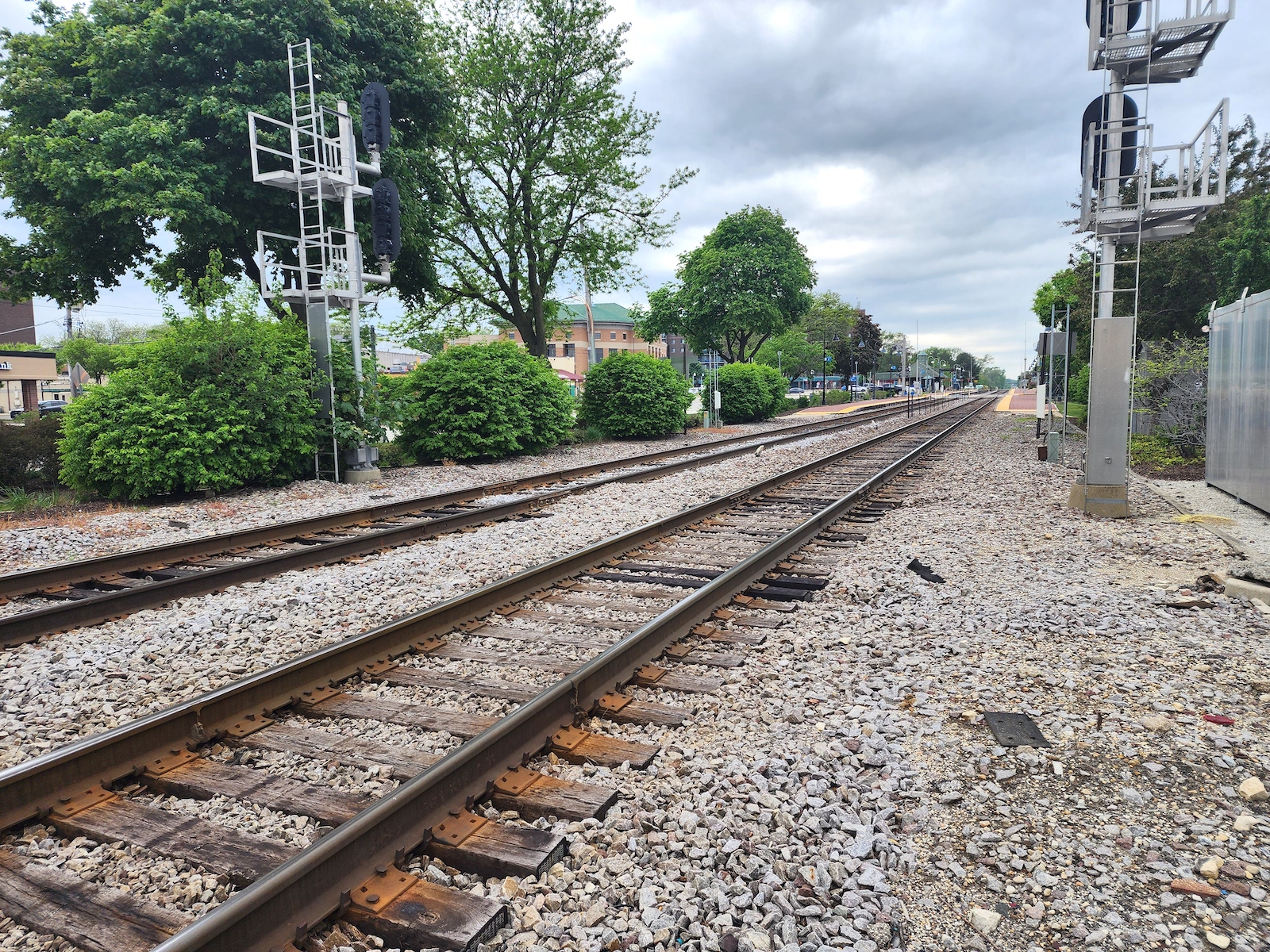
A large sign welcomes visitors to Camanche, Iowa. The town, located on the banks of the Mississippi River, is one of the many railroad communities increasingly worried about potential train disasters involving toxic chemicals. Grist / John McCracken

Later that evening, the horn cuts through the noise at the Poor House Tap at the edge of town. As the train roars by, its resonance is dulled a bit by the chatter of patrons and the barks of Zoe, a labradoodle who knows there are treats behind the bar. She is unmoved as the sound cuts through town, grabbing the attention of locals.
Camanche, located on the banks of the Mississippi River three hours east of Des Moines, is no stranger to the sound of trains. But for some people in this town of 4,500, the familiar sounds of a train whistle now bring an unfamiliar reaction: fear.
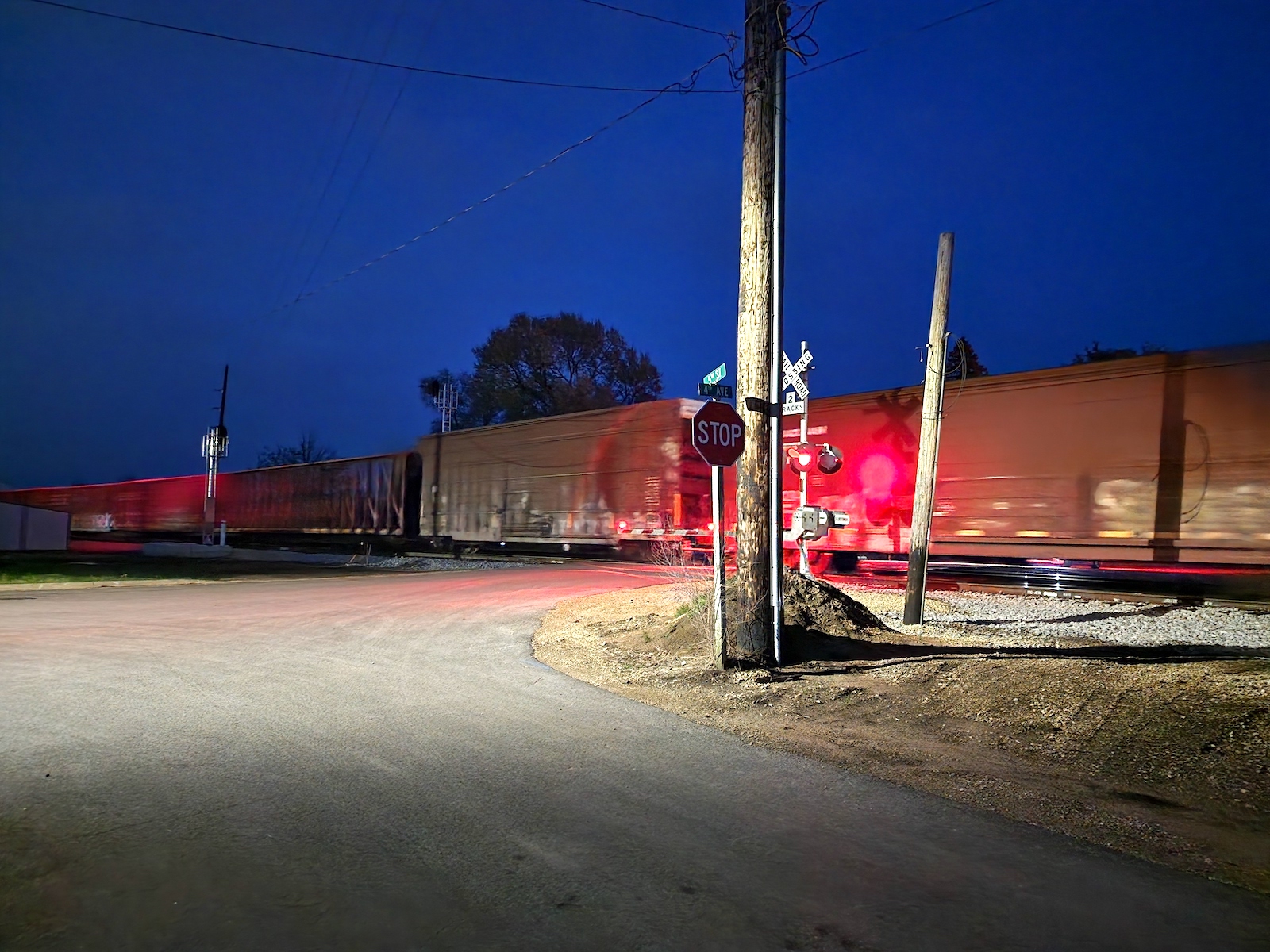
After a train derailed in East Palestine in February — resulting in a towering black plume of smoke, the burning of toxic chemicals, and the evacuation of the town — health concerns still linger, and cleanup woes have plagued the rural community.
In the months since, residents in railroad communities across the country have become increasingly worried about the potential disaster aboard trains. Camanche has become a hotbed of concern over an international railroad merger projected to triple the number of trains moving through town.
Canadian Pacific Railroad, a major rail company headquartered in the province of Alberta, officially purchased Kansas City Southern Railroad in April. The merger, estimated to cost Canada Pacific $31 billion, is the first merger of major railroad companies in two decades.
With this new merger comes a first-of-its-kind rail line connecting Canada, the United States, and Mexico. This route will also directly link Canadian tar sands oil to Gulf Coast refineries, with increased traffic along the way.
Crude oil could be shipped from Canada to Texas and Mexico, refined into petrochemicals on the Gulf Coast, then shipped across the country to its destination.
Camanche currently sees around eight trains a day. After the merger traffic picks up, the city is expected to see upward of 21 trains a day. Other cities along the merger route will see a similar increase, raising the odds of another disaster like the one that struck East Palestine. What separates Camanche is the unique way that railroad tracks isolate residents, creating particularly frightening possibilities for the town.
Standing in Kitt Swanson’s driveway, the first thing you notice is how close the home is to the tracks. She said the trains don’t seem to bother Kiyiyah, her docile Alaskan malamute, but the rails are a few feet from her backyard and shake the house each time a train passes.

Swanson, who has lived in the home for three years, said she worries she and the roughly 1,000 people on the river side of the tracks are without help when trains pass through. When a train comes through town, the only way out for her and others on this side of the tracks is by boat.
“I’m a brittle Type 1 diabetic,” Swanson said. “If I need EMS care, how am I going to get it when all the tracks are blocked?”
Here lies the problem with the expected increase in rail traffic. When a train comes through Camanche, all seven of the crossings are blocked at the same time. This creates a steel wall, isolating more than 1,000 residents from the rest of the town. The only way out is by boat or to wait for the train to pass.
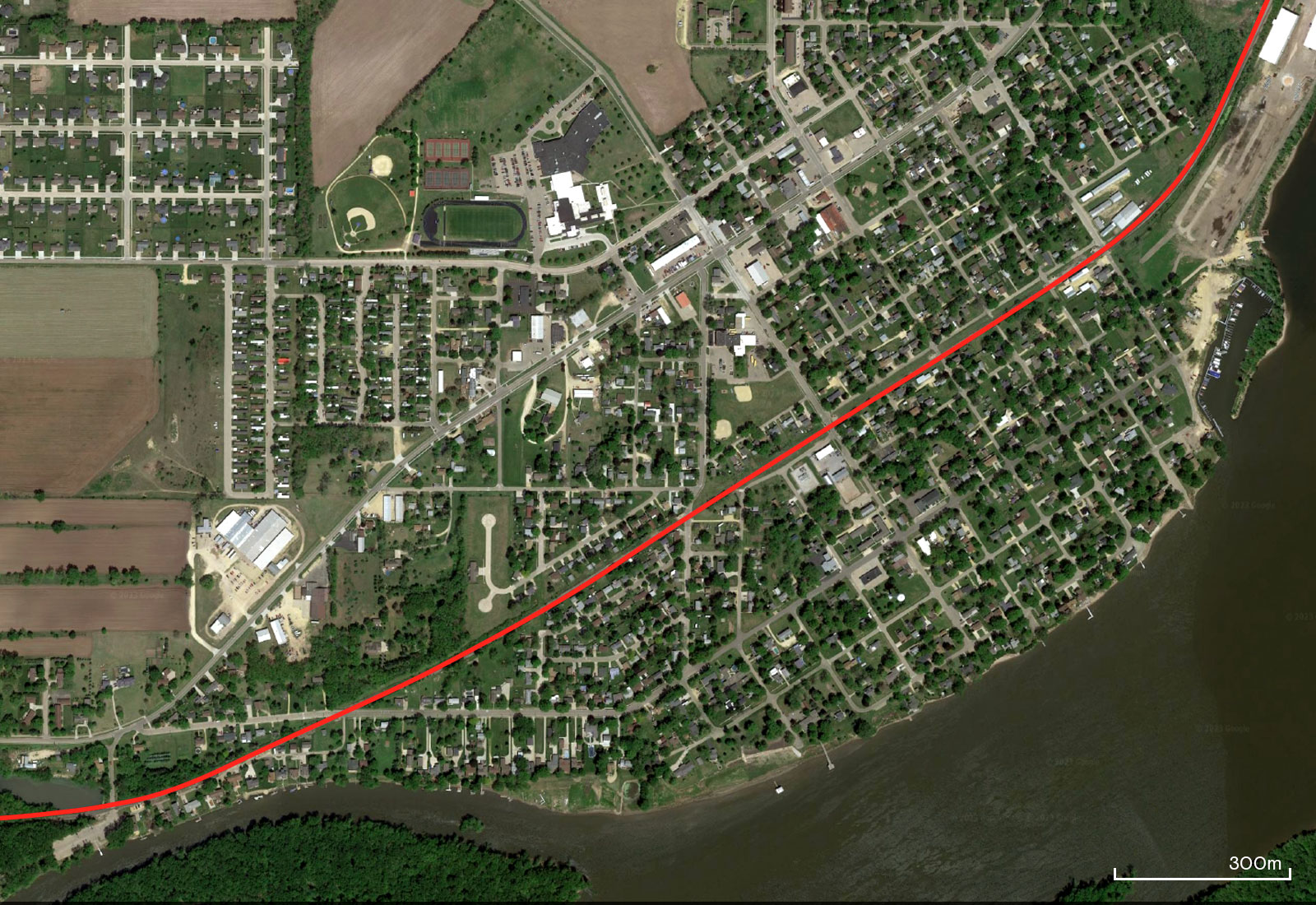
The merger, combined with the fact that freight companies have increased the length of their trains in recent years, means that these residents may be in more danger than ever of being cut off from help, should disaster strike.
According to a report from the Government Accountability Office, train lengths have increased 25 percent from 2008 to 2019, with trains averaging at least 1.4 miles long. The same report found that some rail companies operate three-mile-long trains every week.
“Our biggest concern is simply that we don’t want people to be isolated from emergency services,” said Dave Schutte, the fire chief of Camanche.
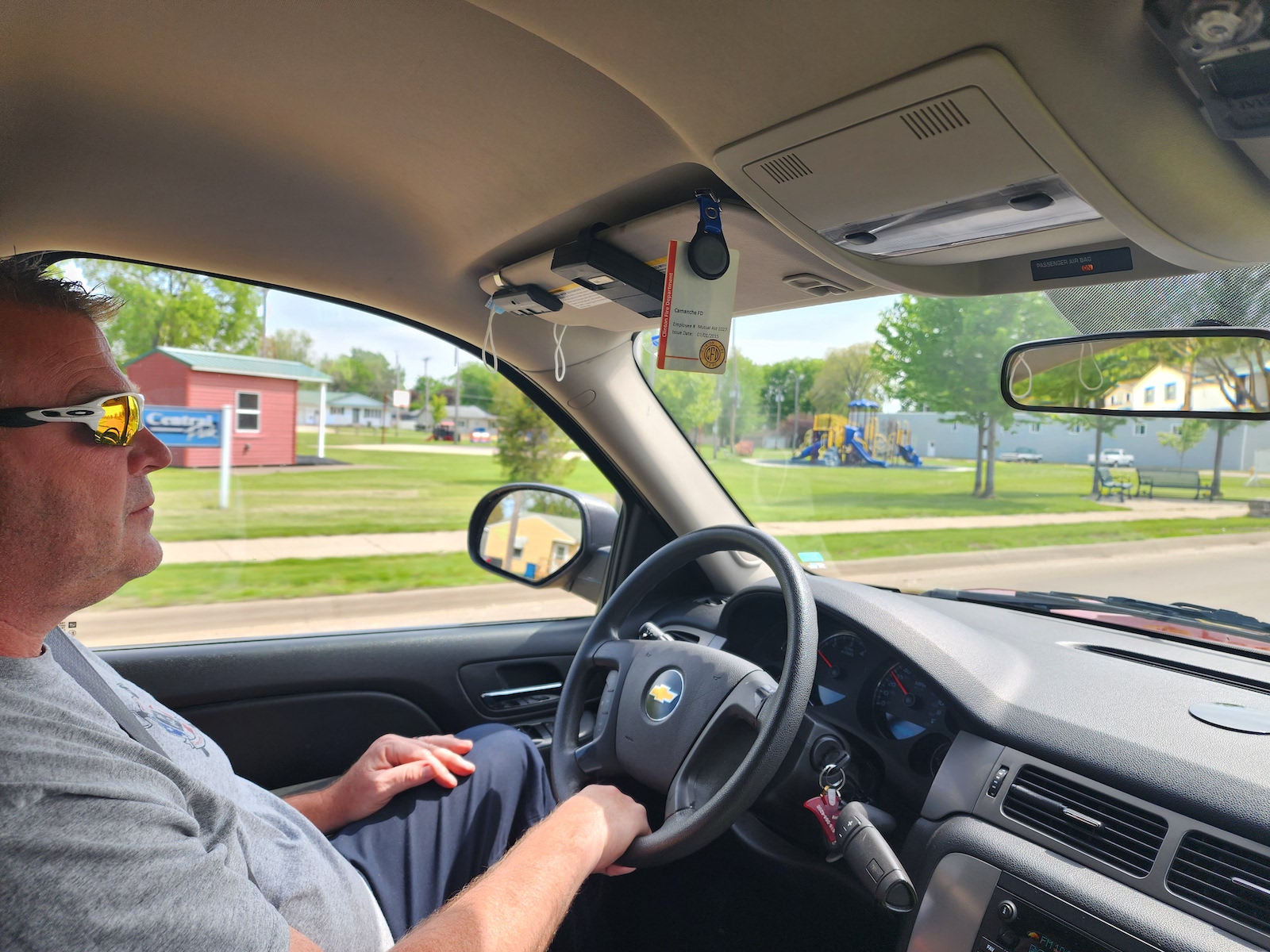
Emergency services are in a bind when trains come through town. Schutte said he’s seen the trains block the tracks for over 10 minutes, which, under the right circumstances, could be life or death for some.
He said the city voiced its concerns to both the rail companies and the Surface Transportation Board, or STB, the federal agency in charge of regulation of rail and other modes of transportation. He said it was a long shot going into the discussions that something would change given the power that the rail businesses have.
“They only looked at super busy crossings in big cities where they have high traffic,” Schutte said. “To me, [being a small town] doesn’t devalue the importance of having those crossings open when they need emergency services.”
Now that the merger has been approved, Schutte said he’s focused on emergency preparedness in case of future derailments or blocked crossings. Right now, the city is developing a plan to evacuate residents via boat if a derailment blocks access to residents during an emergency.
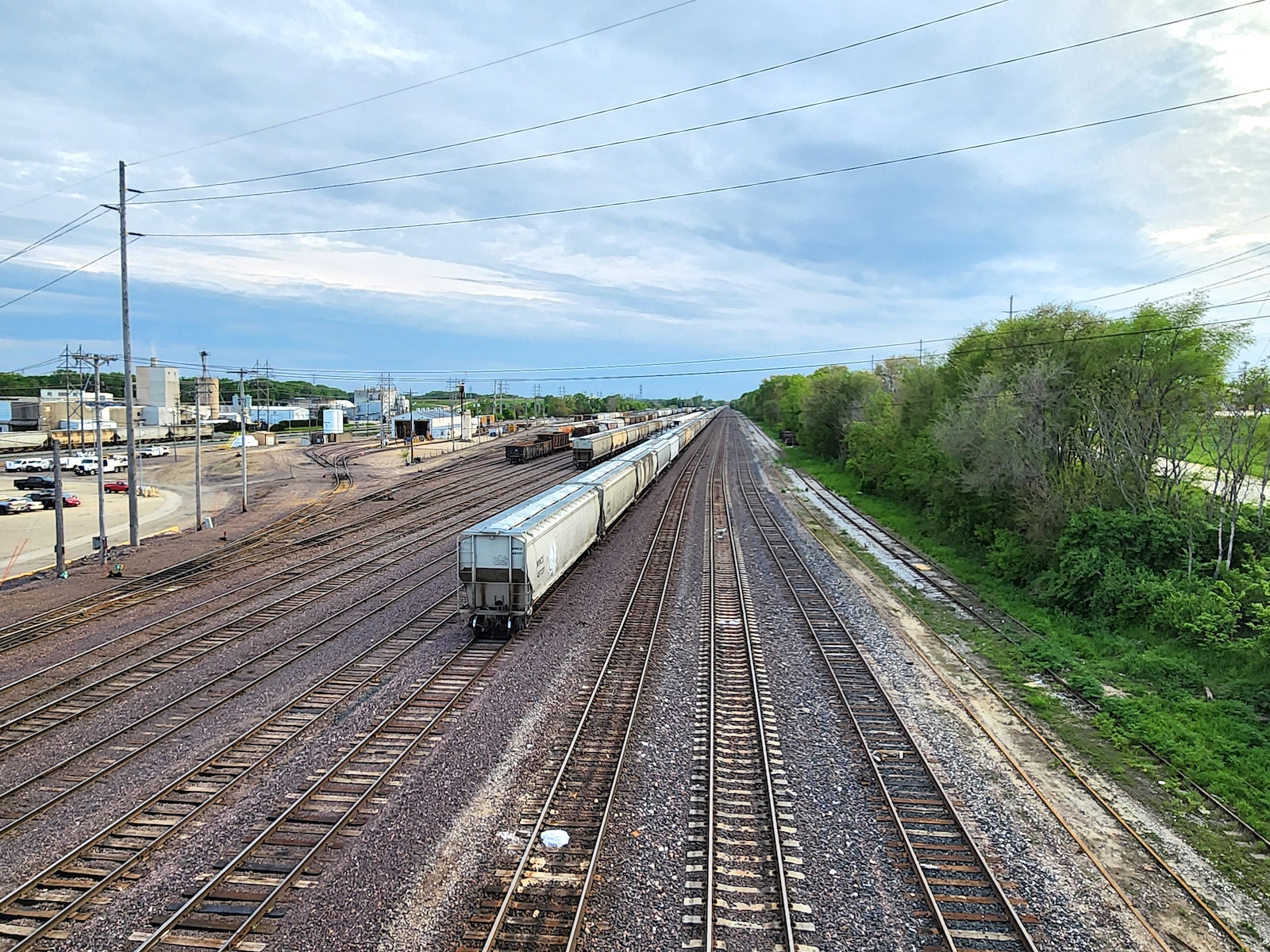
This method has been internally described as the Dunkirk Method, a reference to the World War II evacuation of more than 300,000 British and French soldiers by boat.
In addition to potential emergency response delays, Schutte is also worried about the risks of what’s being carried on the trains, given the disaster in Ohio earlier this year.
“Just seeing what could happen to the community, and the devastation of just how bad it really could be depending on what chemicals are on the train, certainly elevates that concern even more,” Schutte said.
Ashley Foley, a mother of three who works from home, said the regular movement of chemicals and oil on rails is a concern that keeps her up at night, worrying about the safety of her family.

“If a train is going slow and it derails, it’s still scary, but the likelihood of us surviving would be higher,” Foley said. “Now with the stuff that they’re carrying, with trains going faster and being longer, I lay in bed at night and I wonder if tonight’s gonna be the night that it comes off the tracks and wipes out the backside of the house.”
While visiting Camanche, Grist observed a train car with at least eight oil tankers moving through the town after 9 p.m.
Before 38 train cars derailed in Ohio earlier this year, vinyl chloride was a little-known chemical. Now, national media attention has raised awareness of what’s being carried on the trains that move through the nation’s rural backyards.

According to the Federal Railroad Administration, or FRA, and the Association of American Railroads, there are more than 140,000 miles of railway in the U.S., the majority of which are in rural regions.
Oil is transported predominantly by pipeline. But oil capacity in pipelines is dwindling, with rail emerging as a popular means of moving crude oil. Between 2010 and 2014, oil by rail topped almost 1 million barrels a day, which represented 10 percent of American crude oil at the time.
At the time, questions over the safety of transporting oil by rail were in the spotlight after a disaster in Canada. In the early hours of July 6, 2013, an oil train jumped the tracks in Lac-Mégantic, Quebec, and derailed, killing 47 people and leveling the area’s downtown, which has yet to recover.
Now that Canadian shale oil will have a direct path through the United States, concerns over oil explosions caused by train derailments have been rekindled. And though global oil demand is poised to slow, fossil fuel companies are pivoting to a similarly toxic industry.
Petrochemicals are manufactured from fossil fuels and used in a variety of industries, from plastics to fertilizers. In the past decade, fossil fuel companies have raced to build out their plastics divisions, refining oil into petrochemicals along the Gulf Coast and polluting the predominantly Black communities around them.
Global plastic production is estimated to quadruple by 2050, and with it, the risk of transporting volatile chemicals. Vinyl chloride, the now-infamous chemical that escaped from toppled train cars in East Palestine, is a petrochemical and known carcinogen.
The rail industry knows this, and train executives are betting on the continued growth of the petrochemical and plastics markets.
Speaking at an investors’ earnings call in October 2022, Canadian Pacific Executive Vice President and Chief Marketing Officer John Brooks said the rail company is starting to see petrochemicals shipped out of the Heartland Petrochemical Complex in Alberta, Canada. This newly built petrochemical facility is owned by Canadian energy company Inter Pipeline. Canadian Pacific is the only rail company it uses.
“Our partnership with Inter Pipeline expands Canadian Pacific’s plastic service to both export and domestic markets, and this volume growth will be a tailwind for us,” Brooks said.
When asked to comment, Canadian Pacific referred Grist to its STB merger application.
While oil and rail are betting on the petrochemical markets, environmental groups are working to prevent their expansion.
“We just don’t need it,” said Eric de Place, former director of the advocacy organization Beyond Petrochemicals. “They want to triple global plastics consumption, and we already have too much plastic.”
De Place said the pollution and public health dangers seen in East Palestine, Ohio, happen almost every day for communities around the country that reside near petrochemical facilities, just without the spectacle of a massive smoke cloud.
“The derailment in Ohio was horrifying, but in some way, it’s just a moving version of what happens in stationary locations all the time,” he said.
Heading west on Iowa Route 30 to Camanche, the Mississippi River is only visible through split-second cracks in the industrial corridor walling off the nation’s second-longest river.
Along the way, a massive corn mill owned by Chicago-based Archer-Daniels-Midland Company, or ADM, stretches for miles along the river. ADM is a leader in agriculture and food processing, making a variety of products, including corn oils, enzymes, and ethanol.
On an early Saturday morning in mid-May, roughly 80 oil tanker cars could be seen sitting along the tracks at the ADM facility. Their destination, and contents, were unknown. (ADM did not respond to a request for comment.) Some of these cars included rail placards that notate that hazardous materials are onboard, a practice created by the U.S. Department of Transportation and used to determine risk in emergency response situations.
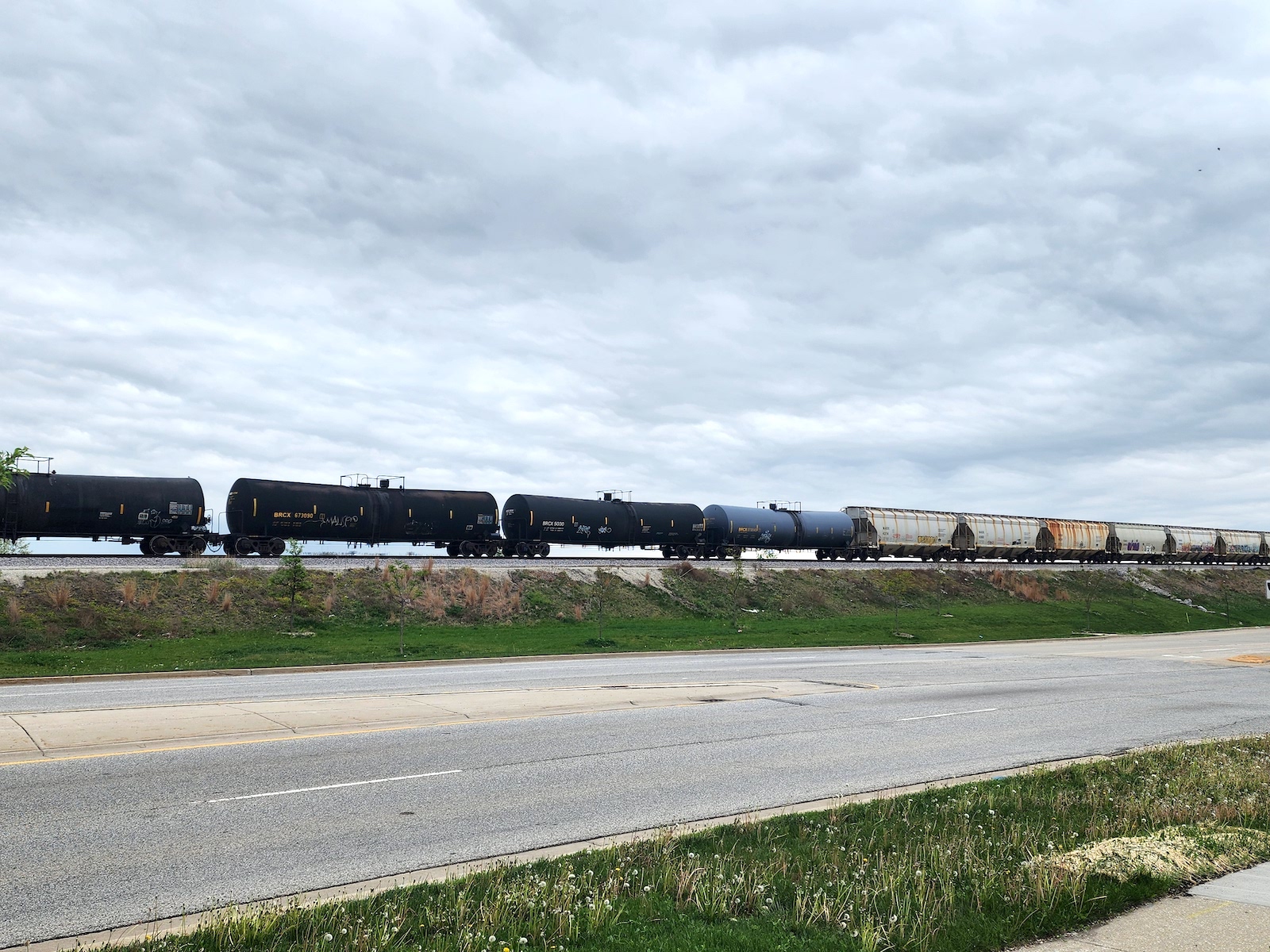
Camanche, like many cities along the banks of the Mississippi, became a solidified community in the mid-19th century, relying on a commercial corridor sculptured by rails and barges to haul timber, clams, pork, and grain across the country.
Since the first tracks split through the city in 1857, the contents of trains have changed drastically. Alice Srp, who lives by the Mississippi River and has lived in Camanche for over 55 years, said she’s seen this shift in her lifetime.
“Rather than cargo containers and [lumber], these are round oil tankers,” Srp said.
Srp said the merger will make emergency response harder for the older population who live on the river side of the tracks. She also worries that, even if a future derailment isn’t fatal, an oil spill could become an ecological nightmare for the region, given that the tracks run parallel to the river.

In May, the dividing line between train tracks and the Mississippi blurred. Camanche saw its third-highest river levels in history, and parts of the tracks in town were underwater. Findings from the U.S. Department of Transportation and global research point to increased hazards and damages to railroads due to climate-fueled flooding.
While rail and water commerce compete for cargo, they often go hand in hand when it comes to location. According to Railfan & Railroad Magazine, railroads are historically built next to rivers to decrease grading and curves along a train’s route, and many routes across the country often followed the “natural courses of water.”
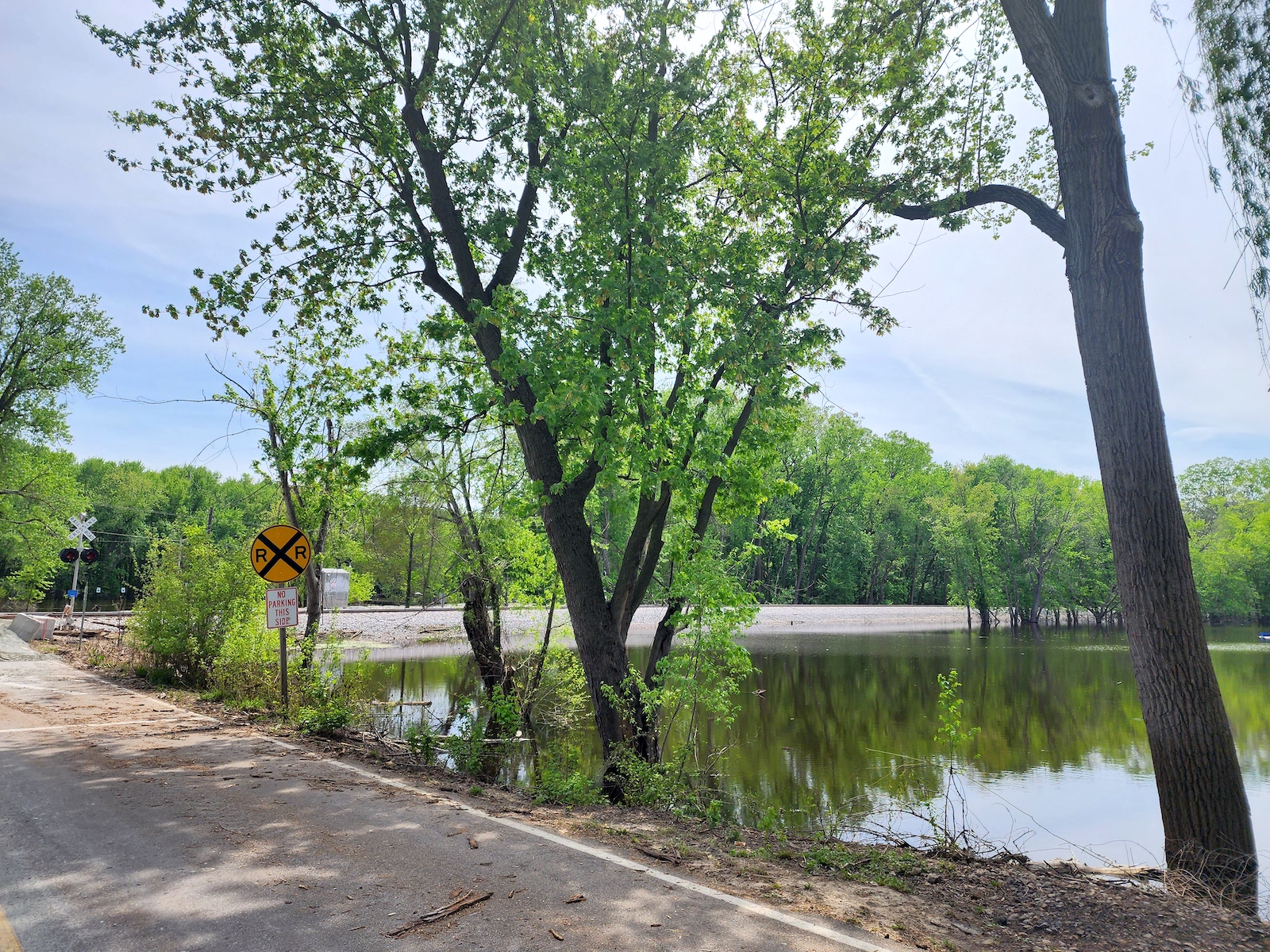
The relationship between railroad corridors and rivers is likely to get more turbulent as flooding becomes more frequent due to a warming climate. In late April, a train derailed in Western Wisconsin along the Mississippi River during heavy rain, dumping train cars into the river.
Despite ongoing concerns about the impact of increased rail traffic on the Mississippi River, the Canadian Pacific and Kansas City rail merger continued. In its final environmental impact statement, the Office of Environmental Analysis for the STB wrote that the negative impacts of the merger would be “negligible, minor, and/or temporary.”
The office also found that the merger would increase the transportation of hazardous material on more than 5,800 miles of rail lines through 16 states, including Iowa, Illinois, and Ohio.
“You feel like you’re just run over and it doesn’t matter,” Srp said.
Residents in Camanche aren’t alone in their opposition to the merger.
Eight communities from Chicago suburbs formed the Coalition to Stop CPKC to oppose the merger. Chicago’s freight industry is the largest in the country and, according to the coalition, the merger will increase traffic by 300 percent in the next three years.

Despite the deal’s federal approval, these suburban communities are pushing back. On May 11, the Coalition to Stop CPKC filed an appeal to prevent the merger, citing a need to review the public safety and environmental impacts.
“The (Surface Transportation Board) ruling shows us three things,” said Jeff Pruyn, the mayor of Itasca, Illinois, a community two hours east of Camanche. “It ignored our concerns for the quality of life in our communities, it ignored our concerns about the negative consequences on economic development in our communities, and most importantly, it ignored our concerns for safety.”
When reached, the STB declined to comment for this story, citing the pending appeal litigation.
In Bensenville, Illinois, another community opposing the merger, the presence of the transportation sector divides the town. On one side, there are quaint bungalows, old-fashioned street lights, and a downtown with cobblestone streets and a commuter train station.
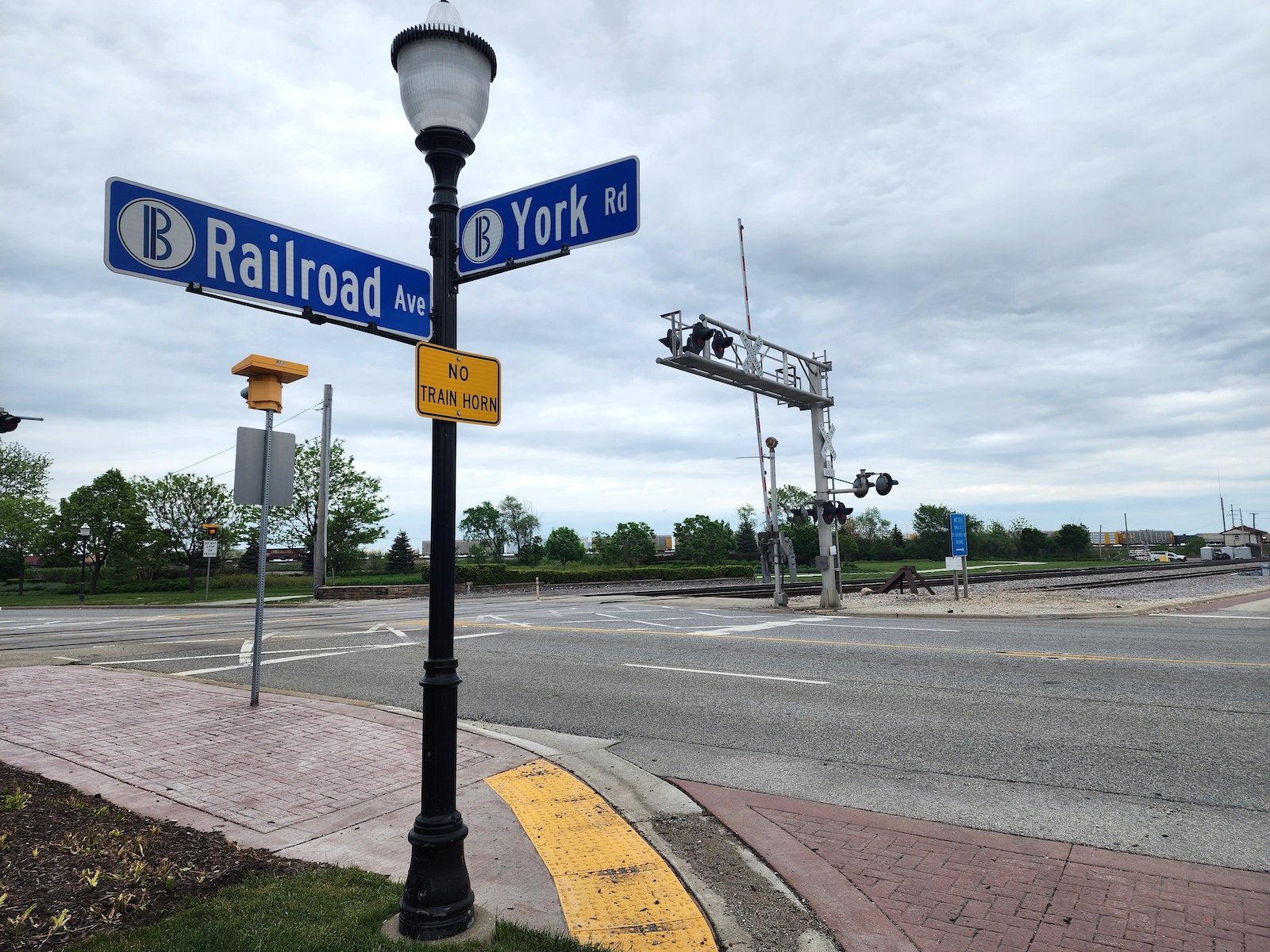
On the other side of Bensenville, a village of more than 18,000, sit two massive transportation facilities: Chicago O’Hare International Airport and the Bensenville Yard, a massive rail terminal. According to the Chicago Metropolitan Agency for Planning, 50 percent of all freight trains in the country pass through Chicago’s varied rail corridors and terminals.
This terminal already sees a variety of cargo, including hazardous materials. On a Saturday morning in mid-May, a train of an estimated 150 cars made its way through Bensenville, headed to the terminal. Grist observed roughly nine train cars marked with a hazard placard for the industrial chemical styrene monomer, an explosive “probable human carcinogen” used to make rubber and other plastics.
There were also 11 train cars marked with a hazard placard for “Not Otherwise Specified” hazardous materials and at least 12 oil tankers with no visible hazard placard.
Safety is not only a concern for the cities and towns seeing increased rail traffic, but also for those working the rails. In the immediate aftermath of the Ohio derailment, the working conditions of railroaders were called into question.
Mark Burrows, a retired railroad engineer from Chicago, said the rail industry has been stretched thin and lacks adequate protection for workers. It suffered a blow to worker protections when President Biden signed a bill blocking a national rail strike last year. Rail, fossil fuel, and petrochemical companies celebrated the strike’s defeat.

Burrows said he’s seen the industry become increasingly consolidated, hurting the well-being of workers. He retired in 2015 after roughly four decades.
He said he saw an increase in oil tankers in his last years of working in the Chicago area and the Bensenville yard. It is possible that workers are more aware of the hazards they deal with daily, he said, but the “draconic and barbaric” working schedules and conditions have them operating at maximum capacity at all times, to avoid being penalized or worse.
“What we now know as Precision Scheduled Railroading just obliterates our normal working agreements,” said Burrows, a member of Railroad Workers United. “And it caused a speedup, having these guys work like maniacs.”
“Precision Scheduled Railroading” is a type of rail traffic management that focuses on increasing efficiency by reducing staff and lengthening trains.
For Burrows, derailments and poor working conditions are symptoms of the industry’s efforts to maximize profits.
He said that establishing better working conditions for staff, creating a nationalized railroad system, and reforming how hazardous materials are classified and transported could all prevent future disasters on the tracks.
“If you ask me what’s the definition of a hazardous train: If it is just one damn car of ammonia, or chlorine, or anything that’s uber hazardous, then that should be considered a hazardous train,” Burrows said. “Because all it takes is for one car to open up.”
About 1,000 miles west of Camanche, the sound of train horns worries Ingrid Wussow.
“I think we are at the precipice of a lot of devastating things if we don’t start making decisions that put our environment first,” she said.
Wussow, the newly elected mayor of Glenwood Springs, Colorado, has joined other surrounding municipalities in a push against expanding oil trains directly through her downtown.
A planned 88-mile railway expansion would connect the oil-rich Uinta Basin in Utah to Union Pacific rail lines, linking Western oil to Gulf Coast refineries.

While the new railway has been on the table since 2014, Wussow said that concerns over the shipment of hazards like oil have been renewed in recent months.
The increase in oil drilling and an expanded fossil fuel market flies in the face of global climate goals. This burning of fossil fuels will continue to exacerbate the climate crisis, resulting in extreme weather events such as flooding and mudslides.
Besides a potentially deadly derailment and oil train explosion in Glenwood Springs’ downtown district, Wussow shares the same concern as other environmental groups and municipal leaders in the region: increased oil by rail along the Colorado River. The expansion is estimated to ship 4.6 billion gallons of waxy crude oil per year through Colorado, a hundred miles of which would run right beside the river.
The Colorado River is the source of drinking water for roughly 40 million people and is currently experiencing a historic drought. Wussow said the river is the “lifeblood” of the region, drawing tourists and recreation throughout the year.
Wussow added that many residents would be put in danger by increased oil train traffic moving full speed through railroad towns. She said communities have already seen the risk posed by increased hazards on rail lines moving through their towns.
“East Palestine, Ohio, is an example of how damaging and concerning these derailments are,” she said.
In Camanche, the dangers of rail contents and the obstacles they pose to public safety aren’t lost on city administrator Andrew Kida, who doesn’t mince words when looking back on negotiations with Canadian Pacific.
“Canadian Pacific doesn’t give one rat’s behind about people,” Kida told Grist.

As part of the merger negotiations, the city of Camanche was offered, and its council eventually turned down, over $200,000 per railroad crossing to shut down up to three crossings. This would permanently close the sections of the road that intersect with the tracks. Camanche counter offered with $2.5 million and the railroad company declined. Larger cities accepted offers in the millions of dollars to shut down crossings.
Kida told Grist that he is now working on using Iowa state law to force the railroad companies to pay for infrastructure that would allow for better access for emergency response.
Kida said he would have preferred the oil that is now moving through his town be sent from Canada by pipeline, as a shale oil derailment in the nearby Mississippi River marshland would “make cleaning up the Exxon Valdez look like child’s play.”
“All they’ve done is taken the Keystone pipeline and put it on wheels and run it right next to the Mississippi River,” he said.
This story was originally published by Grist with the headline Railroaded on Jul 12, 2023.
Over the past century, the fossil fuel industry has made a habit of letting others clean up their messes. Today, the U.S. is dotted with millions of “orphaned wells,” crevices in the earth that companies once used to extract oil and subsequently abandoned once they were no longer considered profitable. But additional help appears to be on the way: This week, the Biden administration announced it would make nearly $660 million in funds from the 2021 bipartisan infrastructure law available to states to plug more of these polluting fissures.
“These investments are good for our climate, for the health of our communities, and for American workers,” said Secretary of the Interior Deb Haaland in a press release on Monday. “With this additional funding, states will put more people to work to clean up these toxic sites, reduce methane emissions and safeguard our environment.”
Unless they are plugged — filled with concrete and stripped of unused equipment — abandoned oil wells can seep hazardous compounds into their surroundings. A growing body of research has shown that orphaned oil wells are a major source of planet-warming emissions, since the steel and concrete walls that reinforce them are prone to cracking over time and releasing methane, a potent greenhouse gas. A 2020 Reuters investigation found that in 2018, orphaned wells emitted an estimated 280,000 tons of methane into the atmosphere, roughly the equivalent of the emissions from the total amount of oil that the U.S. uses on a typical day.
Legally, companies are required to plug their wells after they finish extracting fuel, but regulators have long struggled with enforcement. Part of the challenge is financial: It costs an average of $20,000 to seal a single well, and many companies file for bankruptcy before following through. As a result, experts estimate that there are 2 to 3 million abandoned oil wells across the country, with the majority concentrated in oil-and-gas producing states such as Texas and Pennsylvania.
The Department of the Interior said that the new funding is part of its goal to advance environmental justice, a term that refers to the disproportionate pollution borne by low-income people and communities of color across the country. Numerous studies have demonstrated that past practices like redlining — in which financial services such as loans and insurance were systematically denied to people in certain neighborhoods of color — have concentrated oil and gas wells in majority Black and Hispanic neighborhoods in places like Los Angeles.
The hazards of living near abandoned wells go beyond their contribution to climate change. Orphaned wells are a public health threat since they can emit dangerous chemicals like benzene and toluene, which have been linked to conditions such as blood cancer and liver disease. In rare cases, they can leak methane into nearby buildings, allowing the gas to build up to dangerous levels.
This week’s announcement marks the second major round of funds from the bipartisan infrastructure law to plug orphaned wells. States used the first set of funds, which was announced last August, to plug approximately 3,000 wells. Officials have until the end of the year to apply for this new round of grants, which range from $1 million to $80 million, depending on the number of wells in the state.
“At the end of the day, it’s a lot of money, but it’s nowhere near enough,” Josh Axelrod, a senior policy advocate at the Natural Resources Defense Council, told Grist. “The big question is whether the federal government should really be in the business of cleaning this up since technically, the industry was supposed to be on the hook for these wells over the years.”
This story was originally published by Grist with the headline Biden administration announces $660 million to plug abandoned wells on Jul 12, 2023.